Many things in life affect our path and interests. I entered college as an Electrical Engineering major mainly due to the influence of my dad’s career as an Electrician. While not the same, there was some connection with just the concepts of electricity and circuits. My brother, Jerry, landed a little closer as a journeyman at Memphis Light Gas and Water. While starting in the gas department, he moved to the electrical division and ultimately became foreman of their transformer repair shop. Growing up we received our training as our dad’s helpers in whatever jobs were happening at home. I’m sure we weren’t the best when we were very young, but Dad kept us in his apprentice program while we learned the skills of holding the flashlight correctly, fetching the correct tool that he called out, and making a beer run to the house and back when he needed refreshment. Beyond all of the menial tasks, we learned how to work with electricity safely. Those lessons have stayed with me throughout my life both in dealing with my home as well as in my career.
During my first semester in college, my career path solidified when I wrote my first computer program. I wasn’t sure what the final path would be, but I knew computers were going to be in the middle of what I did. I did end up with a degree in Electrical Engineering but have yet to hold a job with that title. I’ve had positions of Electronics Engineer, Manufacturing Engineer, Applications Analyst, Salesman, Data Collection Systems Manager, Vice President, IT Manager, CIO, and IT Director in that order. And every day a computer was my main tool.
Given that career path, I have always had all kinds of technology at home. Starting in the Manufacturing Engineering days, I started working with barcode data collection. That meant it was common to see laser scanners at home when working on projects in the evening. As toddlers, my sons were proficient in scanning barcodes when they weren’t shooting each other in the eyes with lasers. When they played store, they had real point of sale equipment to scan their barcodes. Along with that were computers, home networks, and the Internet. We didn’t have the best and fastest computers at home like the gaming kids of today. But we did have various computers available to learn on if desired.
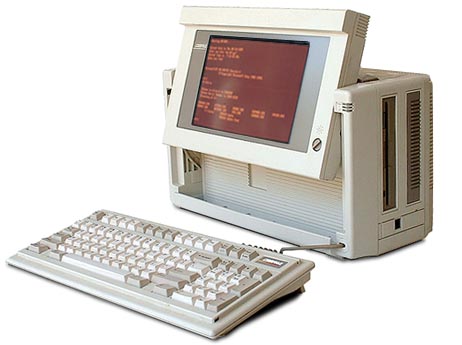
All three of my sons grew up comfortable with technology and using it in their own interests and career paths. As my brother and I stayed a little closer to our dad’s path, my sons took different paths from me. Jason went the path of pastoral ministry. Jonathan went the path of psychology using computers for data analysis, ultimately changing his path to Computer Science which does have a lot of cross over with my career. Josh went to film school with a career path of audio in TV and movies. All three integrate technology in their careers and homes. It is hard to not do so today.
Now the next generation is coming on. My oldest grandson, JJ, is in a scouting program. For one of his merit badges he has chosen Robotics. Living in the age with robots and AI being all the rage, why shouldn’t an eleven-year-old boy decide to design and build a robot? To be fair, he and I got some basic robotic vehicle parts over a year ago and have been tinkering a little. But we never had a goal of a specific robot to create. So, after a few brainstorming sessions we landed on what I currently call “Dice Bot”.
I don’t know if you’ve ever played a game with dice that involves little kids, but a big part of the game involves chasing dice dropped on the floor and resetting a game board due to rolled dice crashing through game pieces and cards/play money on and around the gameboard. While it can be exciting to see what all can happen, it can also cause drama when your sibling destroys your organized game setup.
JJ’s design is to have a robot to move from player to player and roll electronic dice for the player during their turn. Yeah, I can hear you all saying, that’s overkill. Just learn to roll dice. Well, that’s just not how we roll! Yes, pun intended.
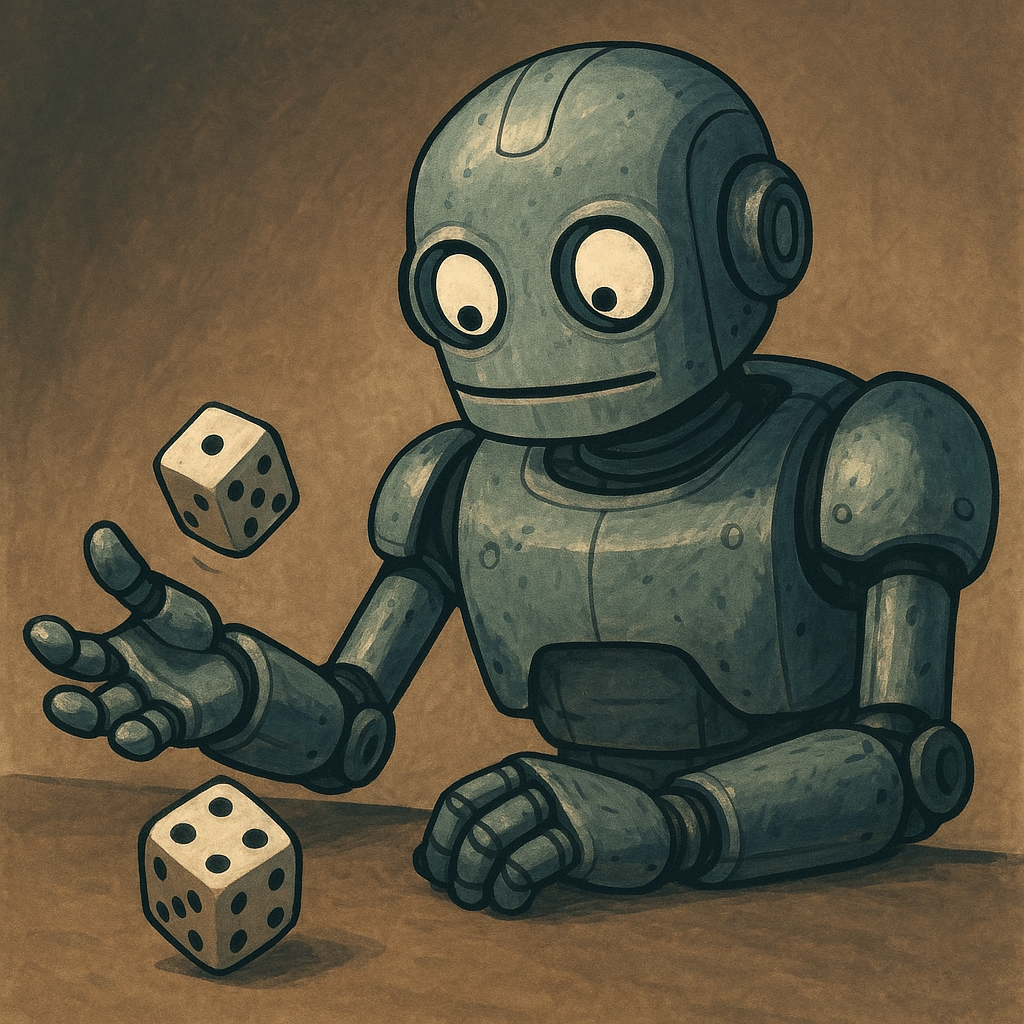
I have taught programming to all ages over the years. I showed Jonathan a little, but he took off without much help from me. JJ is the same, he just figures it out. His concept is a “line following” robot that will find the next player in the game, take input from the player and then somehow roll dice and then figure out when their turn is over so it can move to the next player. It isn’t a trivial design. But it isn’t so complicated to need AI to help, except in generating the Dice Bot image above. There are enough decisions to be made by the robot that we started out our first design meeting with a discussion on State Machines. That normally isn’t a topic in Elementary School programming classes. He didn’t flinch with the concept. JJ loves to dig into projects like this. He can spend hours putting something together or refining code to play a song. He’s definitely not afraid of a challenge.
I live 630 miles from JJ so there aren’t face to face classes. Given the distance there will be other layers of tech involved to allow us to collaborate. We are using a combination of Facetime, Google Classroom, and Raspberry Pi Connect Remote Control. Yeah, we both have Raspberry Pi computers. Maybe I started his tech journey a little earlier than the robot.
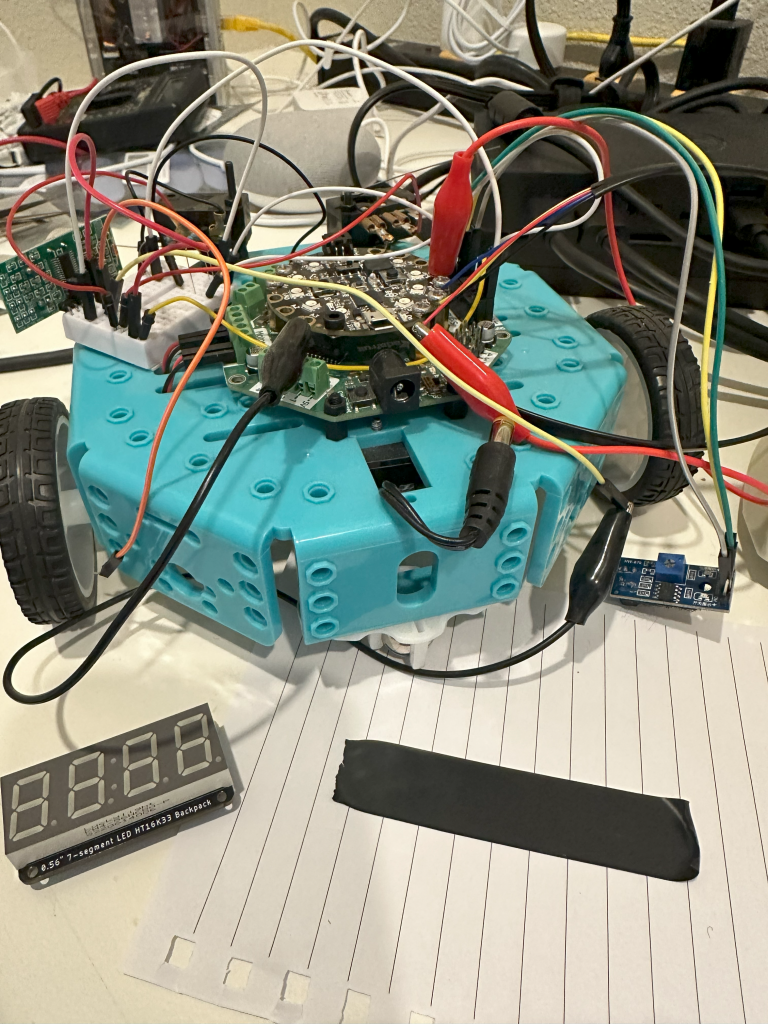
The brain for the robot is an Adafruit Circuit Playground Express. While that’s the brain, the brawn to drive motors and servos is the Adafruit CRICKIT. The actual programming is being done with a graphical development system from Microsoft and Adafruit called MakeCode.
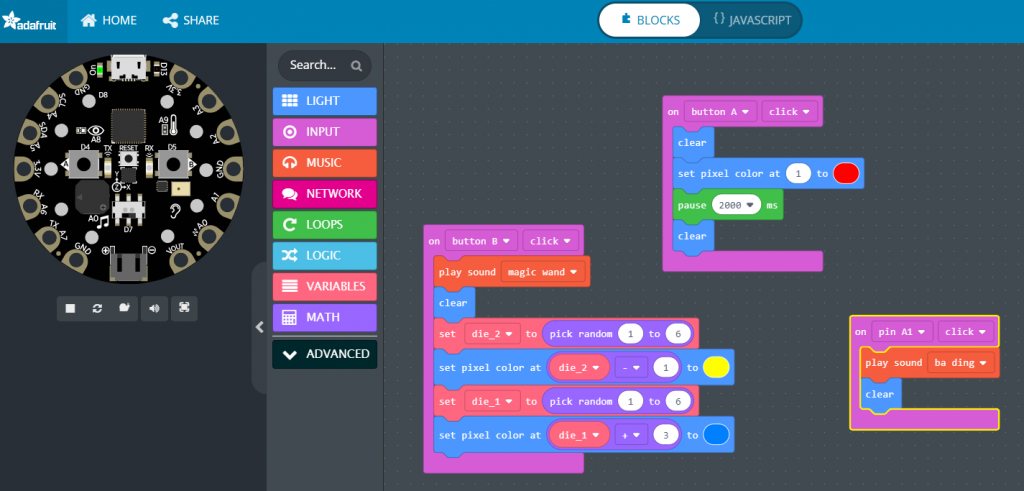
We are just getting started so there is way more of this story to come. There are other components and sensors to be added and integrated into the robot. In JJ’s parts list he also has duct tape. Not all components are high tech in robotics! I’m sure there will be various generations of this robot over the weeks and months to follow. As we learn more there is more we may want to do. But at some point, he will have to make a cut and submit for his merit badge. In the meantime, I am having to stay ahead of him learning and building components and putting together a learning path. That means I’m learning new tech and teaching systems as well.
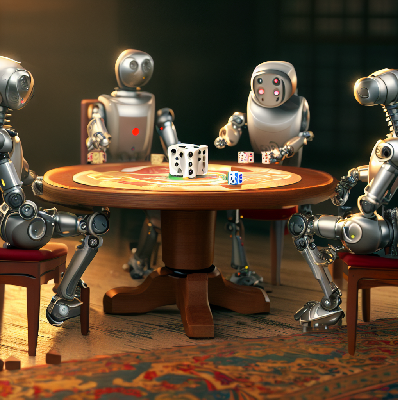
But after all, I’m a tech tinkerer at heart. And what better application of my hobby than to spend time, albeit mostly remote, helping and teaching my grandson. It doesn’t get any better than that.